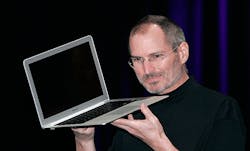Four Faces Of Leadership And The Importance Of The Vision Thing
Whether it’s a presidential candidate, a corporate executive, a safety professional or an NFL coach, people admire a leader with vision.
Employees and customers alike appreciate a leader with a clear idea of where he or she is headed, and who knows how to motivate others to accomplish the goal.
But as much as people might like to say someone is a “born visionary,” in truth, vision is something we develop, not something we’re born with, says Rob-Jan de Jong, a behavioral strategist and author of “Anticipate: The Art of Leading By Looking Ahead.” www.robjandejong.com.
“One thing that visionaries have in common is that they have an ability to notice things early,” de Jong says. “They recognize some sort of significant change is happening and they make use of the opportunities it presents.”
Just identifying that a major change is afoot isn’t enough, he says. The visionary needs to connect the dots into a coherent picture that takes into account future developments.
“That’s easier said than done, but it’s an ability leaders can develop if they are willing to work on it,” de Jong says.
Growing a leader’s visionary side boils down to sharpening both the ability to notice things early and the ability to create coherence. In combination, the abilities suggest four archetypes of leaders.
The Follower – This is someone who is neither good at noticing things early, nor skilled at creating and communicating a coherent story from insights about what the future might bring. The follower may be an excellent manager, but don’t expect this person to inspire others or drive innovation.
“Being a follower isn’t necessarily a bad thing,” de Jong says. “These people are often careful about their decisions and good at critical thinking, and in the short term that can work well. But their preoccupation with today keeps them from anticipating what comes next.”
The Trend Hopper – On the upside, a trend hopper has a well-developed ability to see things early and is willing to embrace changing realities. These are people who are quick to adopt new technology and among the first to fantasize about how things can be different – even radically different, de Jong says.
On the downside, trend hoppers aren’t adept at turning their early insights into a coherent story that justifies an active strategic pursuit. After seeing them chase several flavor-of-the-month ideas, other people start to tune them out.
The Historian – These leaders are adept at connecting the dots and spinning a story that makes sense. They cite patterns, facts and figures and make everything that’s happened so far look coherent and intentional. “When you listen to them, it all makes sense,” de Jong says. “But they have their eyes trained on the factually true past, not the imaginative uncertain future.”
Certainly, it’s valuable to have some historical perspective, he says, but you can’t let history cripple your ability to engage the future. Historians also often are cynics, ready to explain why things are they way they are and why your unconventional idea won’t work.
The Visionary – This is the one to strive to be, says de Jong. A visionary isn’t quick to hop on every fad, but also isn’t a naysayer about how things might be done differently. Instead, says de Jong, the visionary takes a mindful, future-oriented perspective, balancing the need for a compelling future with the awareness of the dangers of becoming dogmatic and overly optimistic.
Visionaries are able to explain an imagined future in a way that fills people with energy and engages their imagination.
“A powerful vision isn’t just nice to have,” de Jong says. “It’s the most important tool in the transformational leader’s toolbox. A leader’s personal imagination, inspiration and dedication are what will ignite the excitement in the people they lead.”
About the Author

Sandy Smith
Sandy Smith is the former content director of EHS Today, and is currently the EHSQ content & community lead at Intelex Technologies Inc. She has written about occupational safety and health and environmental issues since 1990.
